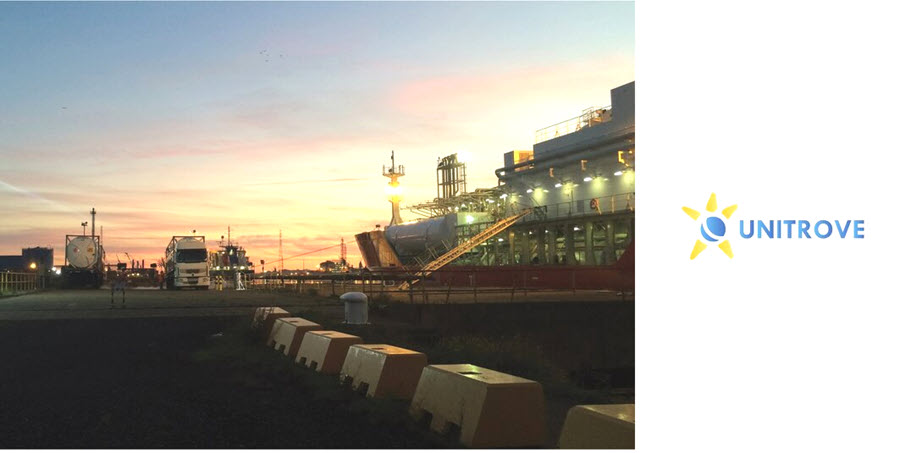
Clean energy solutions provider Unitrove is launching a campaign to clean up the global maritime sector by delivering the world’s first liquid hydrogen bunkering facility for fuelling zero-emission ships.
Unitrove will showcase its liquid hydrogen technology at the UN COP26 conference, which is currently scheduled to be held in Glasgow from the beginning of November 2021.
The company is an active promoter of dual-fuel technology for all modes of transport, and it is now working to build the world’s first liquefied hydrogen (LH) bunkering facility for fueling zero-emission ships. The company also plans to build the world’s first liquefied-to-compressed gaseous hydrogen (L-CGH) bunkering facility, which would allow it to service vessels built with less costly compressed-H2 fuel handling equipment.
According to Unitrove, investing in H2 bunkering facilities will be an essential part of moving the energy transition forward. “Today, hydrogen fuelling infrastructure for ships is non-existent, and there will be no drive for zero-emission ships without zero-emission bunkering infrastructure,” the firm said in recent testimony to the UK Parliament.
“The global maritime sector is one of the most polluting in the world. It’s estimated that just a handful of the worst-polluting mega ships on our oceans today produce more pollution than all the world’s cars put together. That’s a staggering statistic, and one we simply cannot ignore if we stand any chance of achieving the net zero target set by the Government,” said Mr Lua.
“It’s easy for people to forget about the issues that the sector brings because it’s not in the public eye and it requires international collaboration to solve. When the IMO 2020 regulations came into force, most ship operators did the bare minimum necessary.”
Mr Lua said liquid hydrogen as a commercial fuel was relatively unexplored as an option – but that it had great potential for many uses, including plugging the gap where electric and compressed hydrogen cannot reach.
“Liquid hydrogen has long been used to safely and successfully send rockets into space. The technology is mature, but the markets for its use are not. We already see very early signs of light-duty vessels being battery-driven or powered by compressed gaseous hydrogen, but liquid hydrogen will allow us to serve the heavier portion of the shipping fleet where we hope to have a much larger impact.
We are also exploring options including ammonia, liquid organic hydrogen carriers, and solid hydrogen in the form of sodium borohydride. However, we understand that priority is currently being given to the development of international standards and regulations for pure hydrogen, and this could play a significant factor in the long run.”
Read the most up to date Fuel Cell and Hydrogen Industry news at FuelCellsWorks




